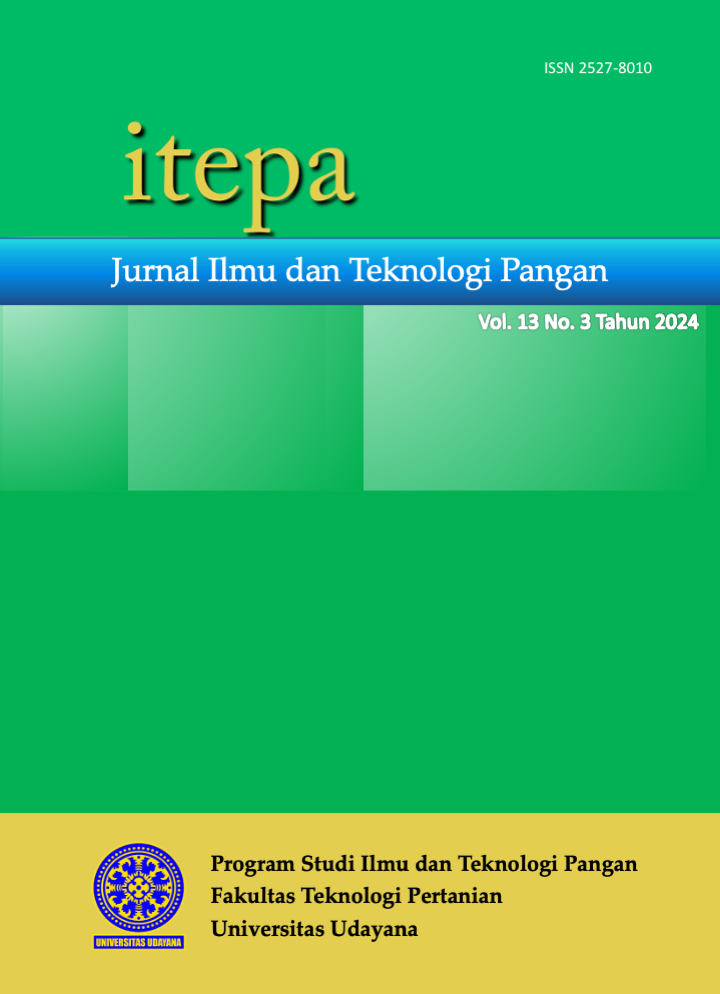Pengaruh Konsentrasi Bubuk Wortel (Daucus carota L.) terhadap Beta Karoten, Warna, dan Sifat Sensoris Permen Jelly
Abstract
Jelly candy is a popular treat enjoyed by a wide range of consumers, from children to adults, due to its sweet taste, chewy texture, and vibrant colors. However, many commercial jelly candies contain synthetic dyes, which can be harmful to health if consumed in large quantities. This study aims to determine the optimal concentration of carrot powder to produce jelly candy with superior beta-carotene content, color, and sensory properties compared to commercial jelly candies. The experiment employed a Completely Randomized Design (CRD) with five levels of carrot powder concentration (0%, 2%, 4%, 8%, and 10%), each treatment repeated three times, resulting in 15 experimental units. The findings revealed that the concentration of carrot powder significantly affected moisture content, ash content, reduced sugar content, total sugar content, beta-carotene content, color intensity, aroma, taste, texture, and overall acceptability. The 2% carrot powder concentration yielded the best jelly candy characteristics, with a moisture content of 18.23%, ash content of 0.18%, reduced sugar content of 6.06%, total sugar content of 50.18%, and beta-carotene content of 3352.33 ?g/100g. The color measurements were L* = 68.03, a* = 35.3, b* = 54.73, chroma = 65.22, and HUE = 24.10. The resulting jelly candy had an appealing orange color, a mild carrot aroma and taste, a chewy texture, and high overall acceptability among panelists. Compared to commercial jelly candies, the jelly candies produced in this study had a higher beta-carotene content and were more favorably received by panelists.
Keywords: carrot powder, beta carotene, color, sensory, jelly candy





